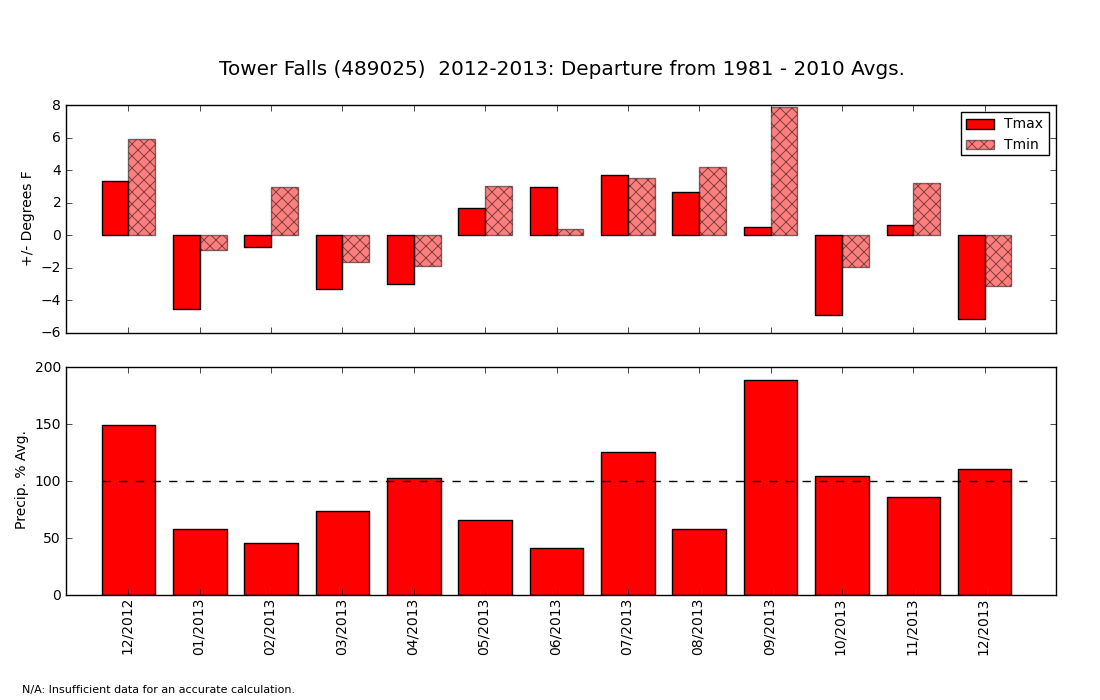

|
|
Current Temperatures in Degrees
Fahrenheit
|
| Oregon Inlet Marina
|
USCG Station Hatteras
|
Cedar Island
|
Cape Lookout
|
Croatan
|
How do I read a monthly departure graph ? These graphs are a bit like the weather report that tells you whether each month was above or below "average." The top half of the graph shows whether each month was warmer or cooler than the 30-year average (see definition of 30-year average above). If a bar goes above zero, the month was warmer than average. If it goes below zero, it was cooler than average. In the example above, you can see that February 2013 had Average Daily Maximum Temperatures (Tmax - see definition above) about 1 degree below average and Average Daily Minimum Temperature (Tmin -- see definition above) about 4 degrees above average. In others, February had daytime high temperatures that were unusually warm and night-time lows that were slightly below average. The bottom half of the graph shows how the precipitation during each month compared to average. If a bar extends above the 100% mark (dashed line), then the month was wetter than average. If a bar falls below the dashed line, it was drier than average. Importantly, this graph will not tell you how warm it was or how much precipitation actually fell. It only tells you how much the temperature and precipitation were above or below the average. How do I read a daily departure graph ?These graphs show daily data for the current year. The red and blue shaded areas (left y-axis) show how much the high temperature for each day differed from the 1981 - 2010 average for that day. For example, the high temperature for January 1 of this year is compared to the average of all the January 1 high temperatures during 1981 - 2010. A value of zero on this scale means that the daily temperature for a particular day was equal to the 30-year average for that day. Positive values mean that the day was warmer than the 30 year average (red). Negative values (blue) mean that the day was cooler than 30-year average for that day. The black bars (right y-axis) show the precipitation in inches during each day. |